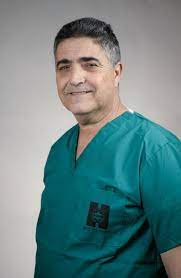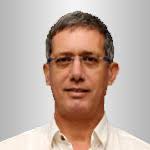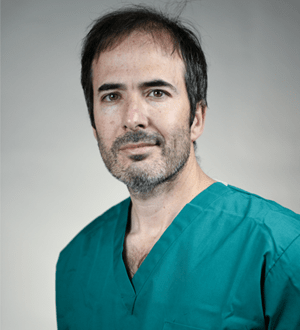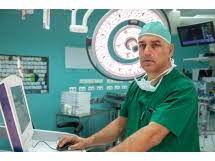Neurosurgery
Unfortunately, not all medical centers can afford modern equipment and highly professional staff training. In this regard, the Maimonides Multidisciplinary Medical Center meets all the requirements of a modern neurosurgical center. All our neurosurgeons have undergone training for guidance of leading Israeli specialists in the field of neurosurgery. Also, if necessary, each neurosurgeon can receive advice from his foreign colleague or online consultation for a selected patient, as all individual cases of diseases are monitored by Israeli specialists.

A whole multidisciplinary team works in the department. Along with highly experienced neurosurgeons and professional mid-level and junior medical staff, oncologists, radiologists, rehabilitators, vertebrologists, psychologists, speech therapists and other specialists work for the benefit of our patients every day to ensure the continuity of all the necessary medical care. This allows the patient to receive a full list of medical services, starting with the diagnosis and ending with the surgical intervention, and the full course of recovery after it. This approach is patient-centered and improves compliance and final treatment outcomes in each case.
If the course of treatment is too expensive and the patient cannot afford it, the clinic offers free assistance, as the Maimonides Multidisciplinary Medical Center functions under the patronage of the “Keren Or for our Child” the Charitable FoundationThe fund's assets are supplemented by donations from various companies and ordinary caring people.
A modern neurosurgical department for adult patients operates on the basis of the Maimonides Multidisciplinary Medical Center, which can be conditionally divided into several units.
Brain neurosurgery
Brain diseases were and remain one of the main causes of premature death among the adult population. Neurodegenerative, vascular, tumor lesions of the brain ultimately end in death if they are not recognized in time and specific treatment is not started. Often the problem is significant and requires neurosurgical intervention.
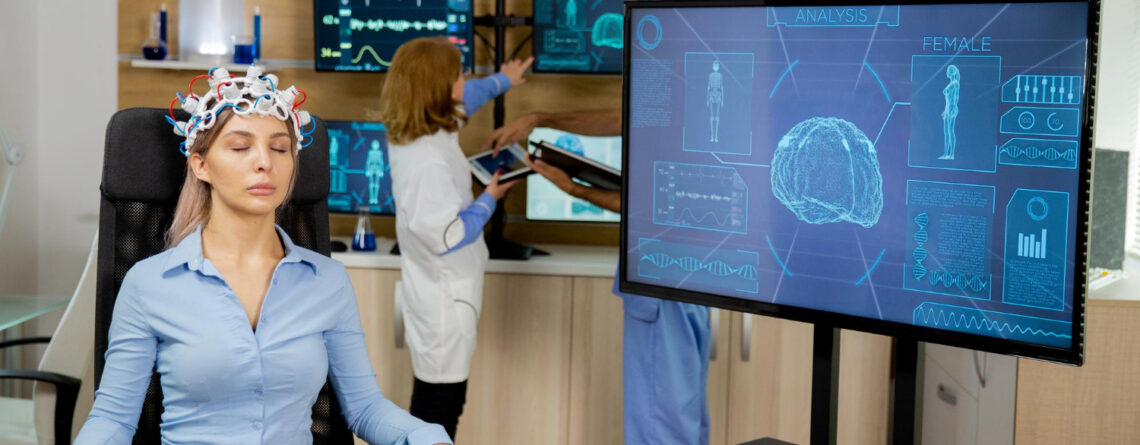
Diagnostic and treatment procedures in the Department of Brain Pathology
If a certain brain disease is suspected, the patient is referred to a detailed and modern diagnostic program. Brain is inaccessibility organ for research (the brain is inside a closed structure – the cranium).So, in order to establish the correct diagnosis, it is necessary to apply complex and high-tech diagnostic procedures. If there is a need to carry out an invasive procedure, it is provided according to world standards under local or general anesthesia. Therefore the patient does not feel pain or fear.
To verify the exact diagnosis, as a rule, the following examinations are used:
- various laboratory and clinical blood and urine tests;
- CT (computed tomography) and MRI (magnetic resonance imaging) of the head and, if necessary, of the entire body, 3D and 4D modeling of the problem area;
- PET-CT of the brain;
- color dopplerography (ultrasound) of vessels of the head and neck;
- angiography of cerebral vessels;
- neurophysiological diagnostic methods, for example EEG – electroencephalography;
- providing a spinal canal puncture and various cerebrospinal fluid (cerebrospinal fluid) exeminations;
- biopsy, cytological and histological examination, immunohistochemical and immunofluorescence examination of tissues (for example, parts of benign or malignant tumors).
If a biopsyis required to establish an accurate diagnosis, the collected tissue samples are sent for review by the best specialists in the field of pathomorphology in Israeli, German and American histological laboratories.Thanks to such "molecular checks", we are absolutely sure of diagnosis correctness and the selection of the most optimal treatment scheme.
If the necessary specialist or equipment is not available, the patient is referred to our affiliated medical centers or Maimonides partner clinics for a detailed diagnosis.
Modern help for hydrocephalus (hydrocephalus) gives a chance for a further and healthy life. One of such innovative procedures is ventriculoperitoneal shunting (VP SHUNT).In this case, a thin shunt is implanted inside the cranium with one end, and with the other it is removed into the abdominal cavity, where the excess cerebrospinal fluid drains.
Neurosurgery has made significant progress in the surgical treatment of epilepsy. Among such innovative procedures is a resection of a certain part of the brain. It is responsible for pathological activity and the development of seizures. Also electrical stimulation of the vagus nerve should be noted.
For diseases of the pituitary gland, innovative minimally invasive surgical interventions are performed. It means that the operation is performed only through the nostril (transsphenoidal) without damage to the integrity of the skull. In some cases, it is necessary to perform transcranial removal of a pituitary adenoma when the tumor reaches significant sizes and cannot be operated on through the nose.
At Maimonides Clinic patients with Parkinson's disease have access to modern neurosurgical treatment of this problem. For example, good results can be achieved by implanting a neurostimulator in the brain. It implants in the thalamus (thalamic stimulator). Effective non-invasive procedures are also used in the treatment complex - MRI-guided focused ultrasound.
In the treatment of brain tumors, it is often necessary to use a craniotomy - access to the pathological center due to a violation of the skull integrity.
Also, patients with brain neoplasms have the possibility of modern neurosurgical treatment. It provides by using of a stereotaxic radiosurgical gamma knife. In such cases the surgery is executed without a single incision, and the pathological focus in the brain is destroyed under the influence of the ionizing radiation of this device.
A cyber knife is an analogue of a gamma knife. This is a radiotherapeutic stereotaxic device for the treatment of various formations in the human body, including in brain. Thanks to modern computer equipment, which allows us to deliver the necessary dose of radiation directly to the tumor, without damaging the surrounding organs and tissues. This is so important in neurosurgery.
Nano-knife technology is successfully used in Israel and in affiliated medical centers for the tumors treatment, especially in hard-to-reach places of the body. Particularly, in brain. The basis of this method is surgical electrical ablation technique. It means that thin electrodes are brought to the tumor, through which a high-voltage electric charge is delivered. It destroys tumor cells.
Also, modern neurosurgery apply the latest X-knife technique.This is a modern stereotaxic neurosurgical device based on a linear accelerator, so, tumor cells are destroyed at a distance (without direct surgical access) using ionizing radiation, while healthy surrounding tissues are not negatively affected.
Another type of modern interventions for brain diseases is cryosurgery.This is a neurosurgical intervention in which very cooled probes are used, which are brought to the tumor in order to destroy the malignant cells, at this time, completely healthy surrounding tissues preserves.
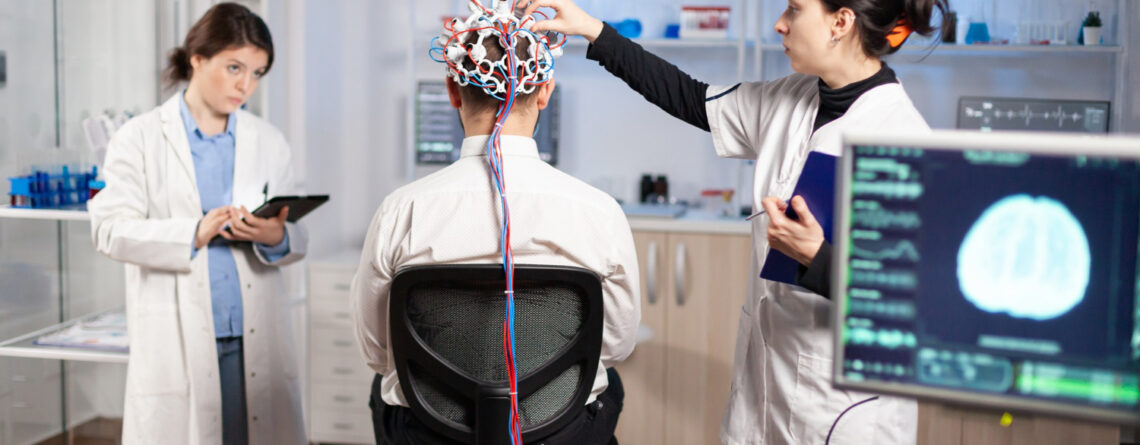
Neurosurgery of the spinal cord and spine
One of the most common complaints among adult patients is back pain. Almost every person faces such a problem sooner or later. If it happens, it will important to understand that chronic back pain without a visible, at first glance, cause can be a sign of a severe disabling, and sometimes fatal, disease of the spinal cord or spine. In some cases, to save the patient from constant pain, it will not be possible to achieve by only with drug treatment, and it is necessary to apply operative neurosurgical interventions.
You need to seek help from professional neurosurgeons exactly in such cases. The doctors of our department have all the necessary skills and adopted the experience of their Israeli colleagues, so you can fully trust them in terms of diagnosis and treatment problems related to the spinal cord or spinal column.
The most frequent problems with which patients turn to us:
- Benign and malignant tumors of the spinal cord and spine – neurinoma of the spinal cord and spine (schwannoma, schwannoglioma, neurilemmoma, neurinoma, perineural fibroblastoma, lemmoma; ependymoma of the spinal cord (true ependymoma, anaplastic ependymoma, myxopapillary ependymoma, subependymoma); cysts of the spinal cord and spine (dermoid, epidermoid, cysts associated with tumors); vessels cavernomas of the spinal cord, hemangioblastoma of the spinal cord, meningioma, astrocytoma, oligodendroglioma, glioblastoma multiforme, medulloblastoma.
- Stenosis of the spinal canal.
- Herniated intervertebral discs.
- Pony tail syndrome.
- Spondylosis.
- Degenerative diseases of the spine.
- Spinal fractures and other traumatic injuries.
- Neurofibromatosis.

Diagnostic and treatment procedures in the Department of Spinal Cord and Spine Pathology
Modern diagnostic equipment allows us to study and analyze the condition of the spinal cord and spinal column in detail. Depending on the results of the initial examination, anamnesis data, presented X-ray images, our doctors may refer the patient to additional examination - CT (computed tomography), MRI (magnetic resonance imaging), MSCT (multispiral computer tomography), EMG (electromyography), USG (ultrasound dopplerography of vessels). In some cases, the patient may be recommended a contrast x-ray examination – myelography, pneumo myelography, angiography, discography, etc.
If there is a necessaty for such additional examinations, the patient is referred to subsidiary medical centers or Maimonides partner clinics. Deciphering the received images is done only by specialists who have undergone appropriate training and internships in the best clinics in Israel, Europe and America.
For diseases of the spinal cord and spine, stereotaxic neurosurgery is also actively used gamma knife, cyber knife, nano knife, x-knife devices, depending on the specific situation.
Vertebroplasty is often performed for spinal injuries. The essence of the procedure is to strengthen and fill the defect of affected vertebrae by the pathological process with a special biocompatible material (bone cement). The procedure could be necessary for patients with compression fractures of the vertebrae, osteoporosis, neoplasms or spine injuries, hemangiomas, metastatic lesions of the spinal column.
Kyphoplasty is a minimally invasive operation on spine. Due to this technique the affected areas of the spinal column are restored. Thanks to kyphoplasty, the patient can restore normal physical activity, preserve a mobility of that part of the spine that was affected by the pathological process, get rid of pain in the damaged area of the spinal column, and lead an active and healthy life.
In the case of degenerative lesions of the spine and their consequences, patients of Maimonides Clinic can undergo the entire range of necessary neurosurgical interventions on the spinal cord and spine, namely:
- removal of damaged intervertebral discs;
- interspinous endofixation systems installation;
- laser vaporization of hernias of the spinal column;
- microsurgical removal of intervertebral disc herniations, regardless of their location;
- minimally invasive Disc-FX technique (radio wave method of decompression of intervertebral discs);
- vertebrae prosthetics affected by the pathological process;
- resection of the spinal cord in a single block (En block Resection);
- thoracoscopic ventral spondylosis.
This is only part of a list of all modern and highly effective treatment procedures that are actively used in Department of Adult Neurosurgery of Maimonides Multidisciplinary Medical Center and in our partner clinics. If a procedure is not available in Ukraine, but it is absolutely necessary for the patient's recovery, he is referred for further treatment to our Israeli partner medical centers.

All patients of Maimonides Medical Center have the opportunity to become participants in clinical studies in which the effectiveness of the latest and experimental drugs and surgical procedures is observed. Frequently, this is the only chance for a long and healthy life for those people for whom all known methods of treatment, unfortunately, became as ineffective.

